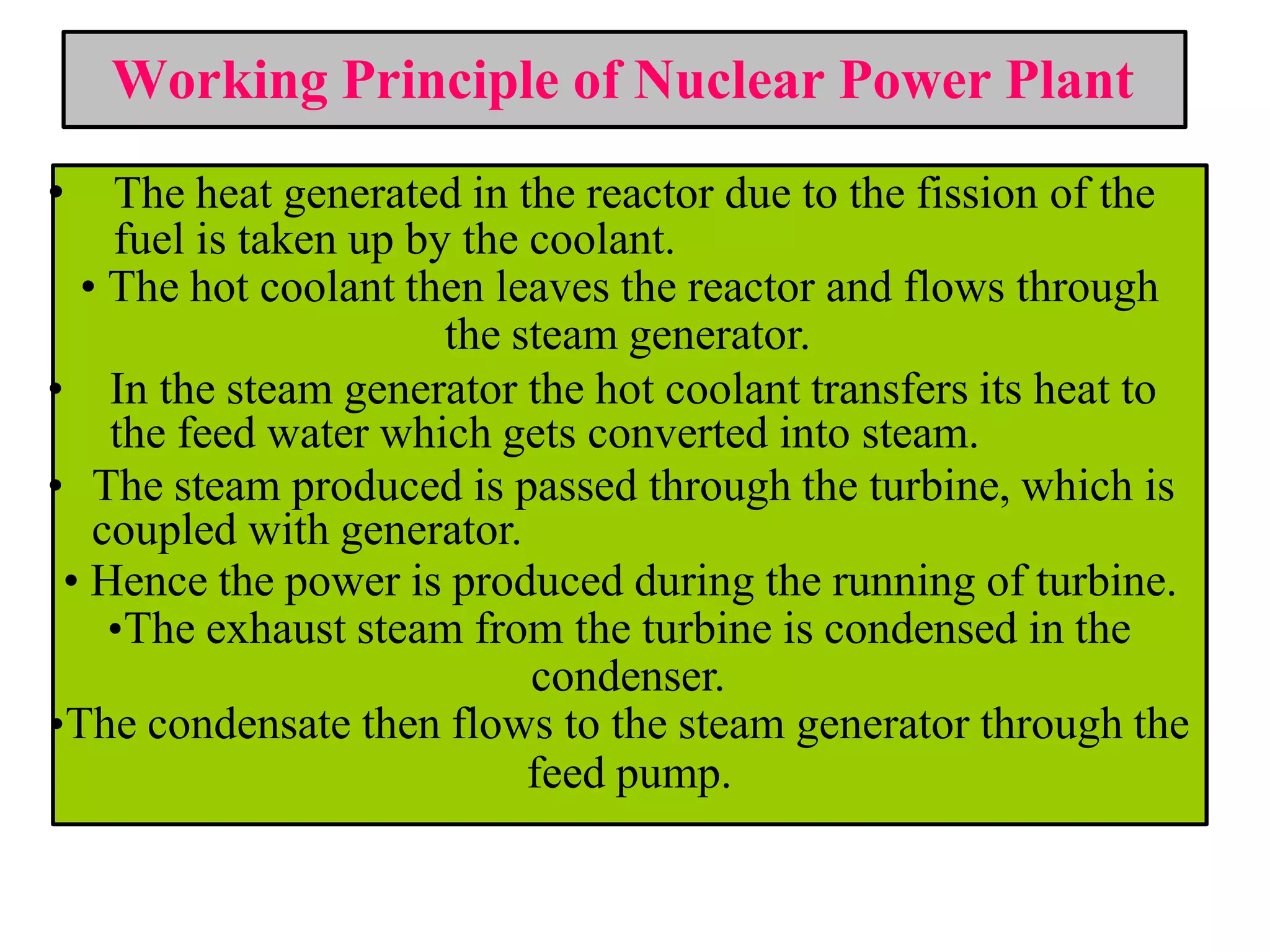This document provides an overview of nuclear power plants, including:
- The basic components and layout of a nuclear power plant, including the nuclear fuel, fuel rods, reactor, coolant, steam generator, turbine, and condenser.
- The working principles of nuclear fission and how it is used to generate heat and produce steam to power the turbine.
- Descriptions of different types of nuclear reactors including pressurized water reactors, boiling water reactors, CANDU reactors, and gas-cooled reactors.
- Safety measures for nuclear power plants and the advantages and disadvantages of nuclear energy.







































































